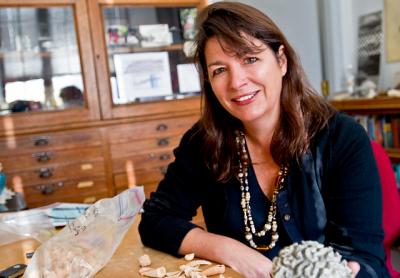The Lowdown on Rising Temps

“Climate scientists have known this was coming,” The Washington Post wrote of the heat wave that has broken many longstanding records in Southern California, “and it may only be the beginning.” The heat wave is “exactly the kind of event that is becoming more likely and severe due to global warming,” said the website Axios, citing climate scientists.
The temperature hit 122.4 degrees in Nawabshah, Pakistan, on April 30. In Japan, torrential rains and the resulting flooding and mudslides have killed more than 150. And over a period of 24 hours last month, the temperature in Quriyat, Oman, never dropped below 108.7 degrees.
While the president of the United States maintains that climate change is a hoax, concocted by the Chinese to make American manufacturing uncompetitive, its manifestations are becoming more and more plentiful, and dire.
Maureen Raymo, a paleoclimatologist and marine geologist, director of the Lamont-Doherty Earth Observatory Core Repository in Palisades, N.Y., and Columbia University’s Bruce C. Heezen Lamont research professor, will discuss her research on climate change over earth’s history on Saturday at 6 p.m. at the Nature Conservancy’s Center for Conservation in East Hampton.
Research by Dr. Raymo, who was elected to the National Academy of Sciences in 2016, has led to the “uplift weathering hypothesis,” which posits that the uplift of the Himalayas and the Tibetan plateau acts as a sponge, absorbing carbon dioxide and resulting in a 40-million-year trend of global cooling that continues today.
But, she said on Tuesday, the rate at which humans are putting carbon dioxide, or CO2, into the atmosphere “is an order of magnitude higher than all the volcanoes in the world. We are just swarming the geologic signal right now. Climate doesn’t care why, it just feels it there, the surface of the planet heats up, and more outgoing radiation is being trapped by these molecules.”
For the layperson, “I try to answer the question, is the climate change we’re observing natural or anthropogenic, which is one thing you always hear from people advocating doing nothing — ‘Climates always change, we don’t know how much of this is natural or due to humans.’ You answer that by learning s much as you can about natural climate variability before humans,” Dr. Raymo said. “That’s what I’ve devoted my career to.”
Yes, carbon dioxide levels can change naturally — over long geologic time periods, Dr. Raymo said — and the distance between the earth and the sun changes due to wobbles in the earth’s orbit. “But take the changes observed over the past, and the ones happening now are far greater,” she said. As politicians deny and obfuscate, “as long as we take our time grasping this bull by the horns,” species are going extinct, ecosystems are collapsing, coral reef systems are dying off, sea level is rising, and ice is melting. “All these things you can’t put back together,” she said.
On the South Fork, a business-as-usual approach means sea level rise, among other manifestations. “One of the periods we study was 125,000 years ago, the last time we were in a warm period between ice ages,” Dr. Raymo said. “It was one to two degrees warmer than today,” due to the earth being slightly closer to the sun during a wobble in its orbit. Sea level, she said, “was more than five meters higher.”
If civilization ceased greenhouse gas emissions today, CO2 levels would continue to rise for decades, Dr. Raymo said. “But that’s exactly what we need to do, turn it around immediately. Every decade we delay it gets harder and harder.”
Dr. Raymo plans to discuss the evidence for global warming on Saturday, she said, “and talk about why earth’s climate changed naturally in the past and what that means for today’s climate and sea level.”
And what does it mean? “It means the past is the key to the future. If we continue to put CO2 in the atmosphere, the climate will continue to warm, and has already warmed by, like, two degrees Fahrenheit in the last 120 years. That rate of warming is accelerating as the rate of CO2 input increases.”
There is a great deal of vested interest in civilization’s continued use of fossil fuels. “But it’s a simple problem in the end,” Dr. Raymo said. “We know without a doubt that if you put more CO2 into the atmosphere, the surface of the planet is going to heat up. All climate data from the past that has been developed over decades of research do nothing to contradict that physical observation, and in fact all of earth’s history has reflected that fact. So it comes down to the choices that we make as citizens about reducing CO2 in the atmosphere. It’s not hard.” Rather, the problem is one of political will.
Despite the growing manifestations of climate crisis and an American government largely hostile to science and facts, Dr. Raymo said that she maintains faith in the power of democracy, and pointed to researchers around the world who are collecting data “to show people what’s happening.” There is a growing recognition, she said, “that this is a real problem.”
--
Correction: Dr. Raymo as the director of the Lamont-Doherty Earth Observatory Core Repository in Palisades, N.Y. An earliery version of this article misidentified her as director of the observatory as a whole.
